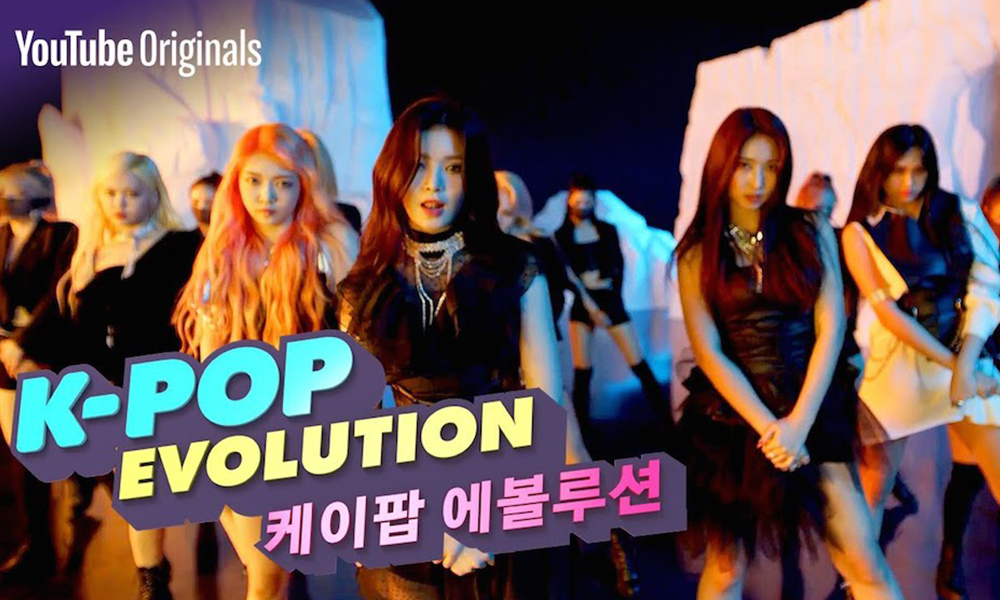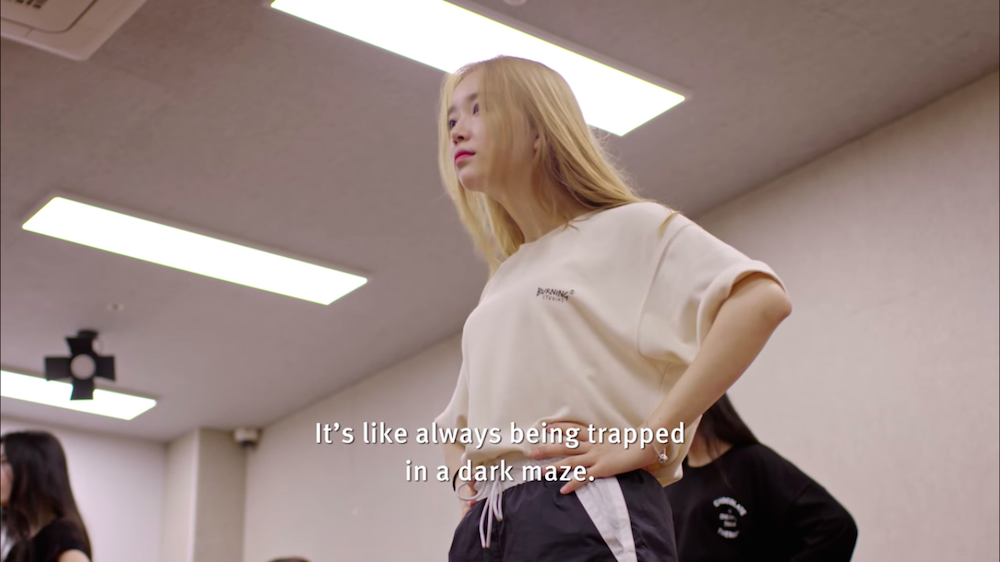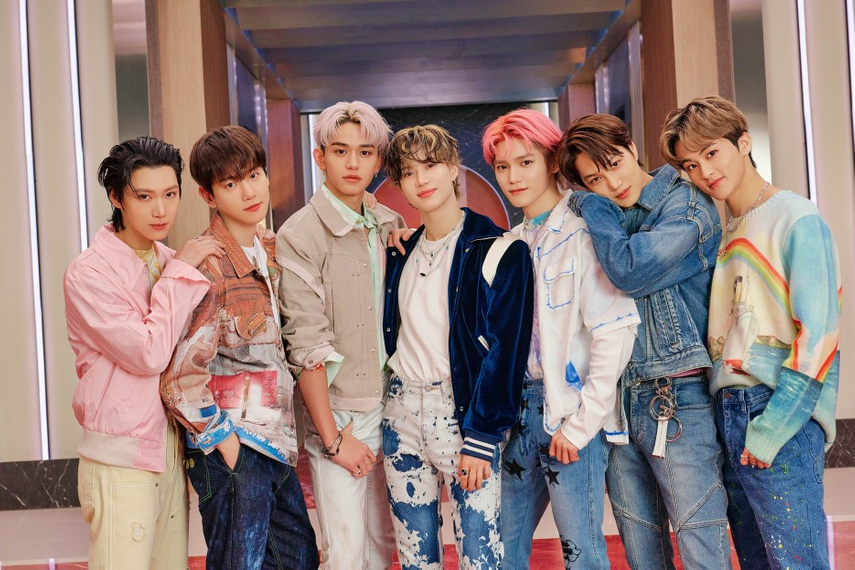YouTube Originals 'K-Pop Evolution' Nominated for Best Short Form Series @ 2022 IDA Documentary Awards
 Friday, March 4, 2022 at 9:40AM |
Friday, March 4, 2022 at 9:40AM |  DFSB Kollective
DFSB Kollective
YouTube's 'K-Pop Evolution' Examines Rise of K-Pop, K-Pop Idol Life
[MARCH 30th 2021] The new YouTube Originals series “K-Pop Evolution” will trace the rise of K-pop to global prominence. The seven-part English docuseries will kick off [April 1st 2021] Wednesday at 10 p.m., and a new episode will be uploaded each week.
The show chronicles the growth of the now 10 billion dollar K-pop industry from its birth with Seo Taiji and Boys in the 1990s to its current global popularity. K-pop idols from different generations -- SuperM, H.O.T., BoA, Super Junior, Kara, Ha:tfelt of Wonder Girls, Kang Daniel, Sandara Park of 2NE1, Red Velvet, EXO, NCT, (G)I-dle, Everglow and Pentagon -- will be featured on the show sharing their K-pop experiences.
“I feel that there have been no documentaries that deal with K-pop as a whole professionally. I was happy that I got a chance to deal with the start of K-pop up to the present day for the first time,” said producer Park Se-jin, who did the local production for the docuseries. “If it is well received, I want to work on the next season because there are still many stories that haven’t been covered,” he said.
In the two-minute trailer, released March 24, K-pop industry personnel are seen talking about the evolution of K-pop, mentioning events such as BoA and Wonder Girls going abroad as well as Psy’s “Gangnam Style” reaching global popularity. They also discuss the public’s expectations that K-pop idols not date publicly or privately, as well as how narrow the window of opportunity is for many groups.
In addition, diverse K-pop idols comment on the intense training and pressure they go through and the difficult process of becoming a star. Fainting due to fatigue and practicing day and night are part of the behind-the-scenes stories of the K-pop idols featured in the upcoming docuseries.
This isn’t the first time K-pop idols have been the focus of YouTube Originals shows. Past shows included documentaries “BTS: Burn the Stage” and “Twice: Seize the Light,” a reality show about Big Bang and a travel series featuring Super Junior. Rapper Jay Park was also featured in a YouTube Originals docuseries.
But “K-pop Evolution” is the first show from YouTube Originals to deal with the history of K-pop across multiple K-pop groups.
http://www.koreaherald.com
By Lim Jang-Won

K-Pop Evolution : A YouTube Original Docuseries Traces the Origin of Korea's Prime Cultural Export
[MAY 23rd 2021] Certain Western observers of Korea wear their aversion to K-pop, or at least their pointed disinterest in it, as a badge of honor. From them I’ve heard the rise of K-pop credited with destroying Korean culture, or — somewhat more positively — with turning the Korean mainstream bland enough to give rise to a counterculture of correspondingly extreme marginality and transgression. But at this point the music itself is, at least here in Korea, never wholly ignorable, and as the country’s third-largest export (a position held fifty years ago by wigs) unlikely to go away in the foreseeable future. Even those Western Seoulites who walk around with headphones lest they pass through one of the many public spaces soundtracked by K-pop must now have moments of curiosity about how and why it’s become quite so prominent. K-Pop Evolution is the first documentary series to attempt an explanation.
Distributed under the banner of Youtube Originals, K-Pop Evolution recently finished making free to view on that site the last of its seven episodes. Together these tell of how Korean pop music has cultivated enthusiastic and often large fan bases around the world, a story not necessarily well understood by many of those fans themselves. Anyone living outside Asia could almost be forgiven for assuming that Korea didn’t make pop music at all until 2012, the year Psy’s “Gangnam Style” went unprecedentedly viral. Though few of Psy’s countrymen would have elected him as K-pop’s emissary to the West, his surprise breakthrough aligned with the priorities laid down fifteen years earlier, at the time of the Asian Financial Crisis. Known locally as “IMF,” that economic disruption weakened the domestic market enough to force many Korean industries, music included, to create product expressly designed for foreign consumption.
“At the time, there was a general sense of inferiority in Korea’s mainstream culture, that we weren’t as good as Japan,” says music critic Kim Zakka, one of K-Pop Evolution‘s more knowledgable interviewees. But there was also a willingness and ability to cater to Japanese consumers, the continuing capitalization on which has meant that “the K-pop we know today wasn’t made for domestic audiences, but created to sell on the international market.” Also among the series’ taking heads is Kwon Bo-ah, better known as BoA, whose great success in Japan almost two decades ago did much to earn her the title “Queen of K-pop.” Coinciding with a period of increased cultural exchange across what Korea calls the East Sea, this endeavor necessitated on her part the cultivation of not just singing and dancing but Japanese language skills as well.
This strategy has expanded along with K-pop’s geographic reach, first across east Asia and now into the West: BTS, the golden tip of the boy-band spear, released their second English-language single just last week. Nowadays, in addition to training Korean singers in other languages, group members have been brought in from Taiwan, Thailand, and other countries increasingly hooked on Korean popular culture; K-Pop Evolution shows such foreign inductees struggling to fit their Korean language studies in with their years of nearly round-the-clock singing and dancing practice. This expectation of linguistic proficiency is admirable, on some level, but the series takes a less neutral point of view on other pressures applied to a K-pop performer-in-training: the strict diets seemingly adhered to by most of the girl-group hopefuls living in shared company dormitories, or the tacit prohibition on dating that applies even (or especially) to established stars.
The rigors of K-pop training and fandom alike invite comparisons to athletics, and some of the figures interviewed draw such comparisons themselves. Metaphors of soldier-like regimentation and mobilization are more common (BTS’ followers call themselves the “ARMY”), and as for the final product of a live concert, Korean-American music executive Bernie Cho likens it to a megachurch. (These resonances with sports, the military, and Christianity hint at K-pop’s vast untapped potential in the American heartland.) I found Cho’s presence an especially welcome one, since he was one of my own interviewees when I first visited Korea seven years ago to record a series of podcasts. His ability to speak about K-pop as both a Korean and a Westerner — and as the rare music-industry professional not evidently high on his own supply — makes him even more of an asset to K-Pop Evolution than he was to my show.
The series’ interviewees also include some of the performers who became stars as K-pop assumed the form it broadly retains today. Quite a few of that generation were raised in the United States, and several seen here grew up in the greater Los Angeles area, like Tony Ahn of 1990s boy-band H.O.T. and Joon Park of the slightly later g.o.d. (speak though he does with vaguely east-coast bray). Both recall the indignities of K-pop stardom in that era, from being arranged into ginned-up rivalries (reminiscent of the mendacious framing of the Beatles and the Rolling Stones by the media of the mid-1960s) to — in Park’s specific case — tearfully confessing in a press conference, at the age of 31, to having a girlfriend. Even the rise could be humiliating, as when g.o.d. signed on to a reality show that had them collectively and incompetently parenting a borrowed infant.
Without H.O.T. and g.o.d., there would surely be no BTS. But even those earliest three-letter K-pop groups owe a good deal to their predecessors, albeit ones overseas: the New Kids on the Block, whom the entertainment companies involved used as a model (or in the Konglish, “benchmarked”) to create Korean boy bands. Parallels appear even between the New Kids and current K-pop acts like Kang Daniel (born Kang Eui-geon), K-Pop Evolution‘s biggest “get.” Glimpses of the limitless variety of merchandise that sends his fans into a frenzy bring to mind a moment in the New Kids on the Block’s E! True Hollywood Story in which one New Kid recalls seeing his and his bandmates’ face embedded in marbles: “It felt weird. Wrong.” A scene of girls lined up at video-call simulation installed in a Kang Daniel-dedicated exhibition is reminiscent of nothing so much as Lisa Simpson dialing the Corey Hotline.
So unexpectedly powerful has K-pop proven as a commercial and even geopolitical force, one can easily forget that the music itself is made for adolescents. A friend of mine here has a teenage daughter who went through a BTS phase not long ago: one day her desk shelves filled up with the band’s CD box sets, photo books, and official light sticks (for synchronized waving at concerts), and within a matter of months the girl had made all the products vanish without a trace. But Western K-pop fans seem able to maintain their enthusiasm, even to gain it in the first place, at startlingly advanced ages. In K-Pop Evolution one Canadian woman remembers the first K-pop concert she attended, breaking up as she recalls both the freebies and the feeling of communion she received there: “As someone who didn’t really love themselves in high school, that really connected with me.”
It would hardly be an exaggeration to describe the K-pop fan’s experience as one of spiritual devotion. Nor would it be too much to see K-pop performers as striving for almost holy perfection, through self-denial and other means of removal from the everyday human realm. Not for nothing are they called “idol singers,” uneasily though the concept may sit with other aspects of modern Korean culture. (“I grew up in the church,” says a Diamond Bar-raised member of boy band 1TYM. “Idol is something you’re not supposed to have.”) Despite the frivolity of K-pop products, music and otherwise, a deadly seriousness attends both their consumption and their production. Suicide occurs among stars with a chilling but unsurprising frequency, given the intensity of public scrutiny fixed upon the brightest. The fans’ expectations only add tinder to the box; surely a Mark David Chapman-style incident is only matter of time.
Perhaps it’s thus in the best interest of K-pop acts to reference current concepts of mental health, as a growing number have done in songs as well as other forms of media. Today’s adolescents certainly face psychological challenges unknown to older generations, not least coming of age in the social-media-rich environment of which K-pop itself has made such relentless use. The subject matter of the songs they listen to has to that extent grown more complicated, at least compared to that which H.O.T., g.o.d., BoA dealt with. But even at the beginning of the 1990s, the seeds were being planted by Seo Taiji and the Boys, who introduced Western sounds (particularly those of new jack swing, big at the time) into their music and social criticism into their lyrics with a competency that had eluded many of the the singing groups who flashed in the pan throughout the 1980s.
K-Pop Evolution could do well to dedicate another season to Seo Taiji and the Boys alone, though their aggressive adherence to passing trends — Seo’s orange-dreadlocks period alone — may give it the feel of a mockumentary. And though the series as it exists does more than any other English-language documentary to draw a line between K-pop as the world knows it today and the wholly domestic popular music enjoyed here in the mid-20th century, a richer story remains to be told. The impressive first episode does manage to situate the major currents of South Korean popular music within those of the country’s still-short history. Incorporating an interview with the guitarist of the Key Boys, who were probably the first rock band in the country, it recounts how President Park Chung Hee cracked down on the youth-oriented music that had only just begun to flourish after the war.
In the 1970s emerged the genre now called “psych folk,” whose leading lights like Shin Joong-hyeon and Kim Jung Mi pulled off what one DJ calls the distinctive musical “combination of imitation and reinterpretation.” Alas, these artists get only a minute’s focus, which is still more than the episode pays to “trot,” the often-sorrowful Korean balladry that emerged in the colonial period — having more than a little in common with the similarly sentimental Japanese style of enka — and in recent years has enjoyed something of a new fashionability. (And Yoo Jae-ha, known as the “father of the Korean ballad,” apparently merits not even a mention.) Much is said about how the most successful Korean popular music, both domestically and internationally, interweaves Western musical elements with distinctively Korean ones, but never are those elements and their characteristics, complementary or otherwise, broken down on a seriously musicological level.
Other than the language in which most of its lyrics are written, what makes K-pop Korean? Many answers are possible, even valid, but it may be more illuminating to ask a different question. Even the scant attention K-Pop Evolution pays to the musical movements of the 1960s and 70s suggests an abundance of roads other than the one taken, down which an enormous amount of time, money, and energy flow into the development of acts that — let’s face it — sound and look to the uninitiated mostly indistinguishable from one another. (And as Youjeong Oh notes in Pop City, less than ten percent of agency-accepted trainees make their debut; of the 82 girl groups who did debut between 2013 and 2015, “fewer than ten achieved substantial public recognition.”) Here we have a plausible and entertaining account of how K-pop became what it is. But what might K-pop have been?
https://blog.lareviewofbooks.org/the-korea-blog
By Colin Marshall
Documentary Featured Commentator : Bernie Cho [DFSB Kollective]
Documentary Editorial Consultant : Bernie Cho [DFSB Kollective]
 Content
Content 








